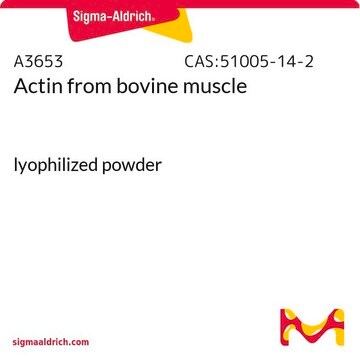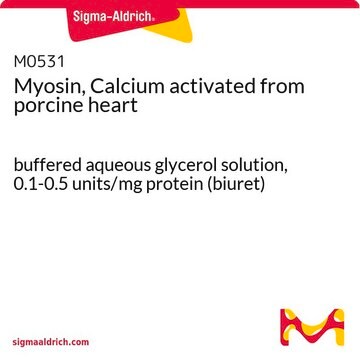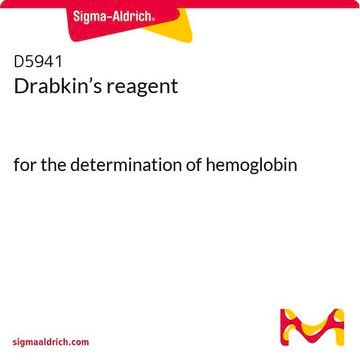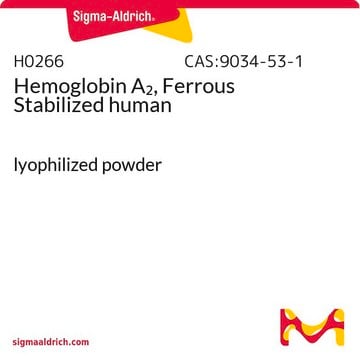H4632
Hemoglobin equine
lyophilized powder
Synonyme(s) :
Hb
About This Item
Produits recommandés
Source biologique
horse
Forme
lyophilized powder
Technique(s)
protein quantification: suitable
Solubilité
H2O: soluble 10 mg/mL
Température de stockage
2-8°C
Informations sur le gène
horse ... HBA(100036557) , HBB(100054109)
Description générale
Application
- to test solid-film sampling methodology in Fourier transform infrared spectroscopy (FT-IR) for protein secondary structure determination
- in capillary reversed-phase liquid chromatography-tandem mass spectrometry (LC/MS/MS) post enzymatic digestion
- for quantification of hemoglobin content from the planktonic crustacean, Daphnia magna
Actions biochimiques/physiologiques
Attention
Code de la classe de stockage
11 - Combustible Solids
Classe de danger pour l'eau (WGK)
WGK 3
Point d'éclair (°F)
Not applicable
Point d'éclair (°C)
Not applicable
Équipement de protection individuelle
Eyeshields, Gloves, type N95 (US)
Certificats d'analyse (COA)
Recherchez un Certificats d'analyse (COA) en saisissant le numéro de lot du produit. Les numéros de lot figurent sur l'étiquette du produit après les mots "Lot" ou "Batch".
Déjà en possession de ce produit ?
Retrouvez la documentation relative aux produits que vous avez récemment achetés dans la Bibliothèque de documents.
Les clients ont également consulté
Notre équipe de scientifiques dispose d'une expérience dans tous les secteurs de la recherche, notamment en sciences de la vie, science des matériaux, synthèse chimique, chromatographie, analyse et dans de nombreux autres domaines..
Contacter notre Service technique














